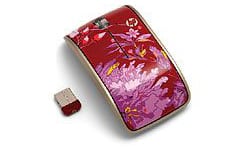Graphic design plays a critical role in brand-building, while also allowing you to showcase your skill set. When working with clients, efficient graphic designing can help you to make a strong first impression. Read on to find out the common design essentials that every graphic artist should keep in mind.
- Balance – This gives stability and structure to the overall design, adding individuality to each element. Here, design elements refer to shapes, text boxes and images that form your design. It is essential that a designer is familiar with the visual weight of every element. In most cases, the balance is not equal, which implies that a design can either be symmetrical or asymmetrical. In a symmetrical design, the weight of elements is evenly divided on either side of it. On the other hand, asymmetrical designs achieve this balance by using scale, contrast and colour to achieve the flow in design.
- Proximity – This aspect helps to create a relationship between similar or related elements. Proximity emphasises the fact that elements on a design don’t need to be grouped, instead, they should be visually connected by font, colour, size and various other elements.
- Alignment – This feature helps to create a seamless visual connection with the design elements. It plays a vital role in giving an ordered appearance to images, shapes and blocks of texts by eliminating elements that are placed in a disordered manner.
- Visual hierarchy – This refers to the hierarchy that is formed when extra visual weight is given to the most important element, ensuring your message that is effectively displayed through your design. Visual hierarchy can be achieved by implementing the following methods:
- Using larger or bolder fonts to highlight the title;
- Placing the key message higher than the other design elements;
- Adding focus to larger, more detailed and colourful visuals than those less relevant or smaller images.
- Repetition – A fundamental aspect of a design that can make a brand or design instantly recognisable to viewers is repetition. This method is employed to strengthen the overall design by binding together consistent elements such as logo and colour palette.
- Contrast – This feature refers to the difference between the two opposing design elements that guide a viewer’s attention to the key sections. The most common examples of contrast are dark vs. light, contemporary vs. old-fashioned and large vs. small.
- Colour – This design essentially dictates the overall mood of a design as the colours that are chosen will represent your brand and its tonality. Colour palettes may be used to create a contrast or even complement the elements within a design.
If you are looking to pursue a career path where you can explore your creative ideas, and apply design elements to a range of projects, then opting to study BA graphic design degree may be the best choice for you.







